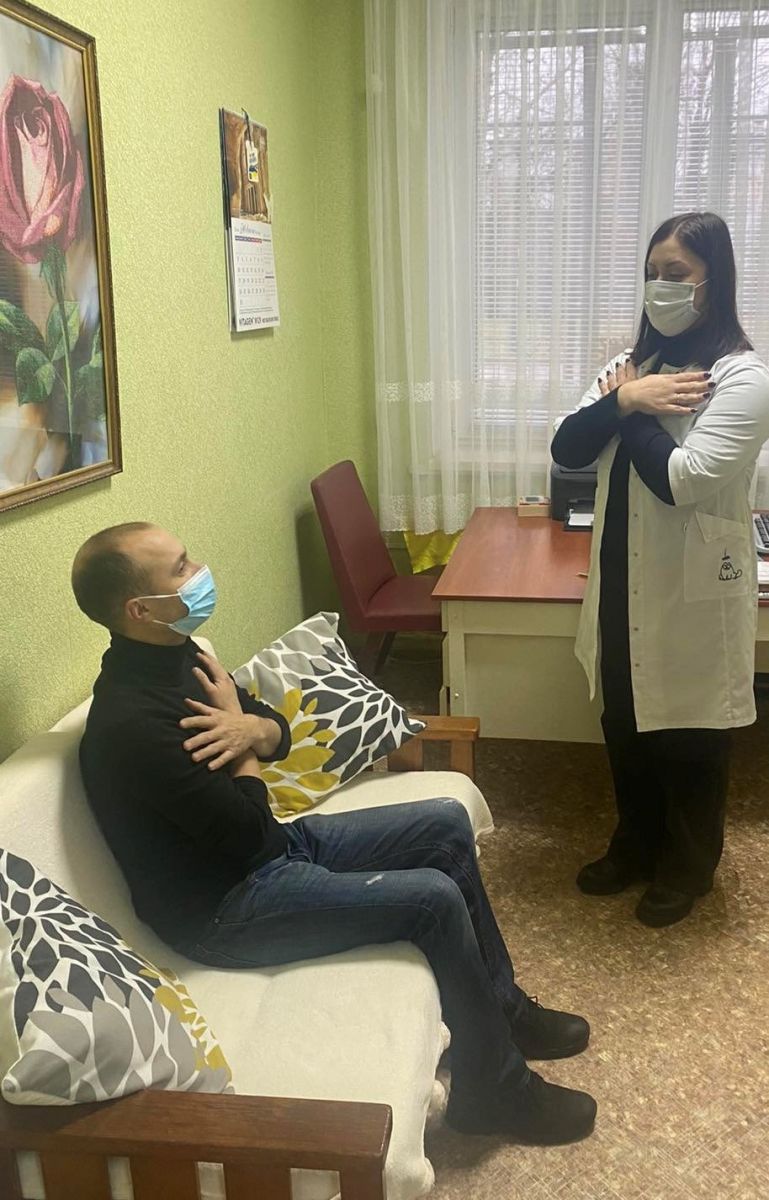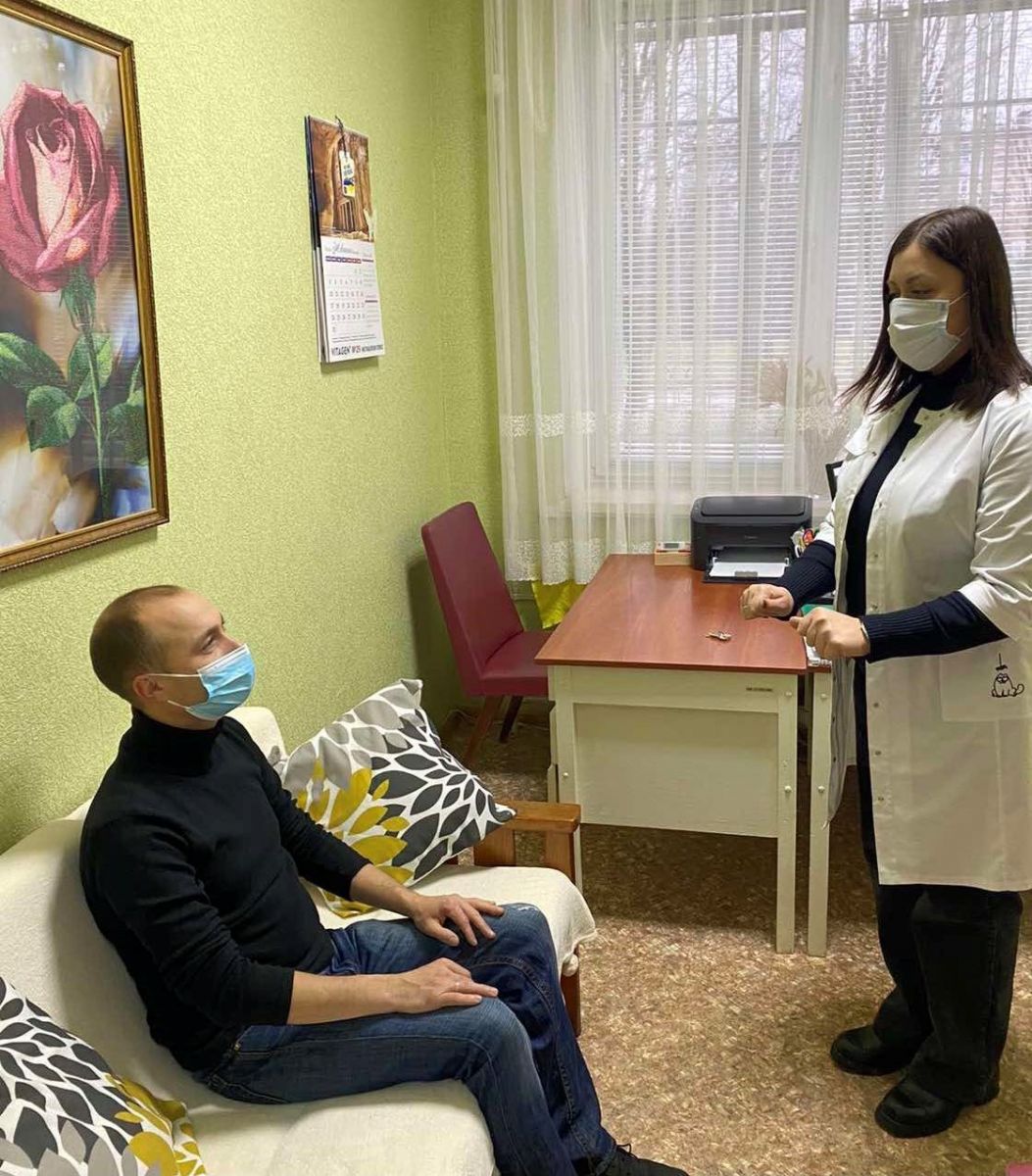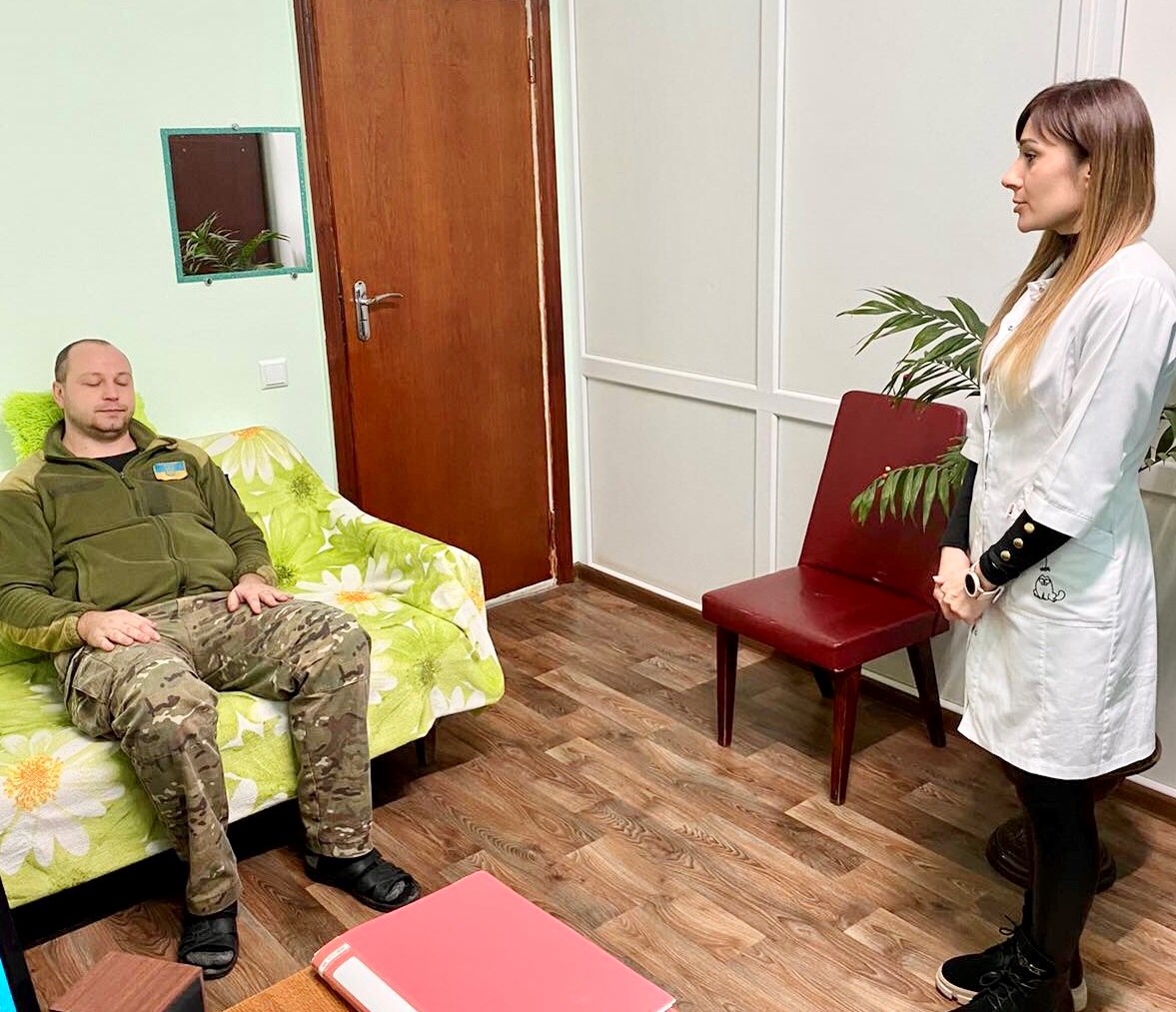22.11.2022
On November 21, 2022, the psychologists of the PD and PPV Center conducted individual classes on self-regulation skills for the servicemen of the Armed Forces of Ukraine, victims of the aggression of the Russian Federation, who are undergoing inpatient treatment at the "TMO of the Ministry of Internal Affairs of Ukraine in Kirovohrad Oblast" and police officers who are experiencing a state of emotional tension.
Self-regulation is the management of one's psycho-emotional state, which is achieved through the influence of a person on himself with the help of words, visual images, control of muscle tone and breathing.
Effects of self-regulation:
calming effect (elimination of emotional tension),
recovery effect (weakening of fatigue),
activation effect (increased psychophysiological reactivity).
Ways of self-regulation:
laughter, smile, humor;
thoughts about good, pleasant things;
various movements such as pulling, muscle relaxation;
looking at flowers in the room, the landscape outside the window, photos, other pleasant or dear things;
"bathing" (real or imagined) in the sun's rays;
breathing fresh air;
reading poems;
expressing praise, compliments to someone just like that.
METHODS OF SELF-REGULATION
I. Ways related to breath control
Breath control is an effective means of influencing muscle tone and emotional centers of the brain. Slow and deep breathing (with the participation of the abdominal muscles) reduces the excitability of the nerve centers, promotes muscle relaxation, i.e. relaxation. Frequent (chest) breathing, on the contrary, ensures a high level of activity of the body, maintains nervous and mental tension.
Method 1
While sitting or standing, try to relax your body muscles as much as possible and focus on your breathing.
To the count of 1-2-3-4, take a slow deep breath (at the same time, the stomach protrudes forward, and the chest is still); – for the next four counts, breath is held;
then smooth exhalation to the count of 1-2-3-4-5-6;
again a delay before the next breath on the count of 1-2-3-4.
After 3-5 minutes of such breathing, you will notice that your condition has become noticeably calmer.
Method 2
Imagine that a feather is hanging in front of your nose at a distance of 10-15 cm. Breathe only through your nose and so smoothly that the fluff does NOT oscillate.
Method 3
Because in a situation of irritation, anger, we forget to exhale normally: – exhale deeply;
hold your breath as long as you can; - take several deep breaths; - hold your breath again.
His own way.
II. Methods related to the management of muscle tone, movement
Under the influence of mental stress, muscle tension occurs. The ability to relax it allows you to relieve nervous and mental tension and quickly restore strength.
Method 4
Since it is impossible to achieve complete relaxation of all muscles at once, you need to focus on the most tense parts of the body.
sit comfortably, if possible - close your eyes;
breathe deeply and slowly;
take an internal look around your entire body, starting from the top to the tips of the toes (or in the reverse order) and find the places of greatest tension (often these are the mouth, lips, jaws, neck, back of the head, shoulders, stomach);
try to tighten even more the places that are difficult to relax (to the point of muscle tremors), do it while inhaling;
feel that tension;
sharply release the tension - do it on exhalation; - do this several times.
In well-relaxed muscles, you will feel the appearance of warmth and pleasant heaviness.
If it is not possible to remove the tension, especially on the face, try to smooth it out with the help of light self-massage with circular movements of the fingers (you can make faces of surprise, joy, etc.).
Method 5
In free minutes, rest breaks, master the successive relaxation of different muscle groups, following the following rules:
1) realize and remember the feeling of relaxed muscles in contrast to overtension;
2) each exercise consists of three phases: "tense-feel-relax";
3) tension corresponds to inhalation, relaxation to exhalation.
You can work with the following muscle groups:
face (forehead, eyelids, lips, jaws);
the back of the head, shoulders;
chest;
thighs and abdomen;
hands;
the lower part of the legs.
Note. To learn to relax muscles, you need to have them, so daily physical activity increases the effectiveness of muscle relaxation exercises.
Method 6
Try to change the rhythm of the whole body with the help of monotonous rhythmic movements:
circular movements with the thumbs in a "half lock";
sorting through the beads on your necklace;
picking rosaries;
walk around the office (corridor) several times, inhaling for two steps and exhaling for five steps.
His own way.
III. Ways related to the influence of the word
Verbal influence engages the conscious mechanism of self-suggestion, and has a direct effect on the psychophysiological functions of the body. Formulations of self-suggestion are built in the form of simple and short statements, with a positive orientation (without the particle "no").
Method 7. Self-commands
A self-order is a short, fragmentary order made to oneself. Use self-command when you are convinced that you need to behave in a certain way, but you experience difficulties in doing so. "Speak calmly!", "Shut up, shut up!"
IV. Methods related to the use of mental images
The use of images is associated with an active influence on the central nervous system of feelings and ideas. We don't remember many of our positive feelings, observations, impressions, but if we awaken the memories and images associated with them, we can relive them and even intensify them. And if we mainly influence consciousness with words, then images and imagination give us access to powerful subconscious reserves of the psyche.
Method 10
To use imagery for self-regulation:
Specially remember situations, events in which you felt comfortable, relaxed, calm - these are your resource situations.
Do it in the three main modalities inherent in man. To do this, remember:
1) visual images of the event (what you see - clouds, flowers, forest);
2) auditory images (what sounds do you hear - birds singing, babbling brook, rain noise, music);
3) sensations in the body (what do you feel - the warmth of the sun's rays on your face, drops of water, the smell of blooming apple trees, the taste of strawberries).
When feeling tense, tired:
1) sit comfortably, closing your eyes if possible;
2) breathe slowly and deeply;
3) remember one of your resource situations;
4) relive it, remembering all its visual, auditory and bodily sensations;
5) stay inside this situation for a few minutes;
6) open your eyes and go back to work.
His own way.
(с) 2024